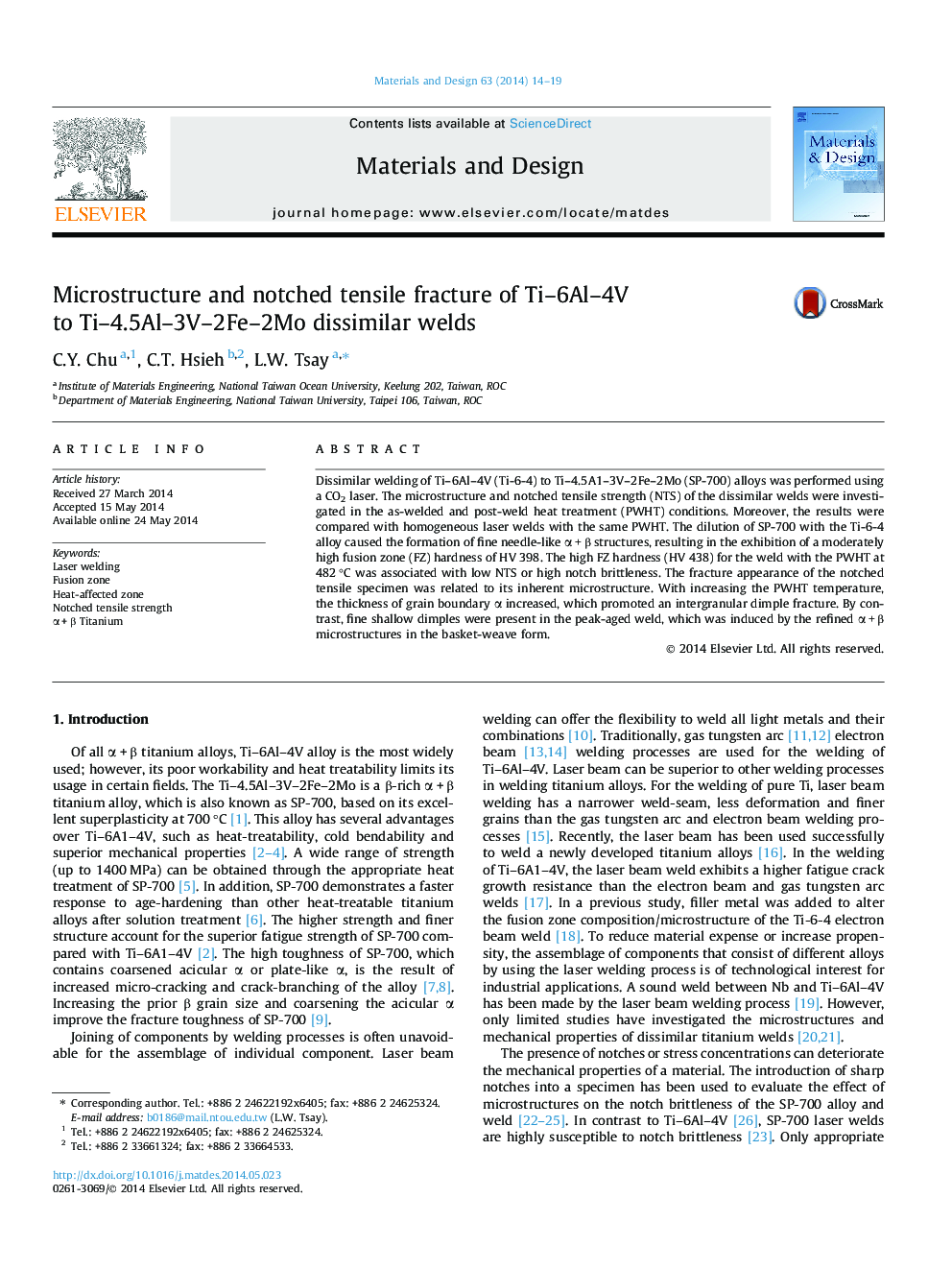| Article ID | Journal | Published Year | Pages | File Type |
|---|---|---|---|---|
| 828973 | Materials & Design (1980-2015) | 2014 | 6 Pages |
•Laser welding of Ti–6Al–4V (Ti-6-4) to Ti–4.5A1–3V–2Fe–2Mo (SP-700) was performed.•The microhardness of the FZ for the welds was sensitive to the PWHT temperature.•The weld with PWHT at 482 °C possessed the lowest NTS values among the specimens.•The thicker α layer along the boundary in the weld assist intergranular separation.
Dissimilar welding of Ti–6Al–4V (Ti-6-4) to Ti–4.5A1–3V–2Fe–2Mo (SP-700) alloys was performed using a CO2 laser. The microstructure and notched tensile strength (NTS) of the dissimilar welds were investigated in the as-welded and post-weld heat treatment (PWHT) conditions. Moreover, the results were compared with homogeneous laser welds with the same PWHT. The dilution of SP-700 with the Ti-6-4 alloy caused the formation of fine needle-like α + β structures, resulting in the exhibition of a moderately high fusion zone (FZ) hardness of HV 398. The high FZ hardness (HV 438) for the weld with the PWHT at 482 °C was associated with low NTS or high notch brittleness. The fracture appearance of the notched tensile specimen was related to its inherent microstructure. With increasing the PWHT temperature, the thickness of grain boundary α increased, which promoted an intergranular dimple fracture. By contrast, fine shallow dimples were present in the peak-aged weld, which was induced by the refined α + β microstructures in the basket-weave form.
